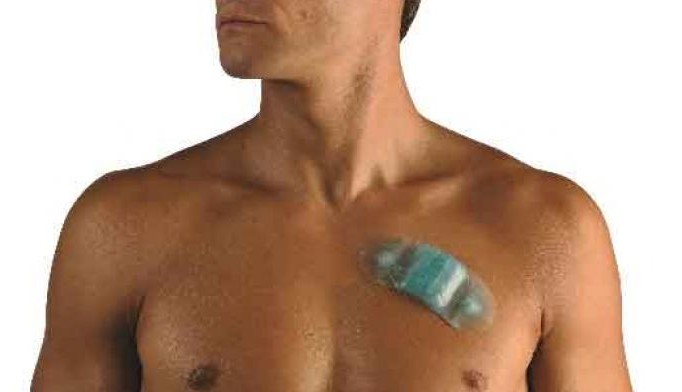Not sure what to wear? How about medicals.
December 03, 2015
on
on

Wearables are great and eco-fashionable. Technically speaking they either consume power from a cleverly hidden battery, or they act as the battery, which should be the ideal to go for if we want the energy balance to be zero and still look “green & hip”.
Given the rise of IoT, embedded technology and smart sensors it's no surprise that there has been a growing surge in recent years of start-ups specifically developing peripheral devices to monitor intimate details of one's physical condition. One company to have spotted and worded this is Accutronics. Add to that, they say, a maturing ecosystem of mobile operating systems (OSs) such as Android and iOS, as well as an improving cloud computing infrastructure, and the widespread availability of cheap wireless sensors means that OEMs in the consumer electronics sector have glimpsed the profitability of the medical technology (MedTech) sector — and they want a piece of the pie.
Sadly, while wearable devices may have revolutionised the consumer electronics market, it doesn’t fit too well on the wrist of healthcare. Many industry experts are concerned at what they believe to be an incompatibility between the two industries.
A constant worry is the lifespan of the battery in the device. With 40 years' experience in designing and developing batteries, Accutronics say they have seen them get smaller in accordance with more compact device designs. This reduction in size unfortunately comes with a reduction in energy density, leading many wearable devices to suffer from inadequate run time. If your smartphone runs out of charge mid-conversation, it’s frustrating and inconvenient, but if your device runs out while monitoring your health, it can become life threatening.
While their energy balance is not substantially positive and guaranteed within wide margins, wearables paradoxically are What Not to Wear for medical applications and professional integration. No worries, they’re A-Okay for partygoers and hikers.
Given the rise of IoT, embedded technology and smart sensors it's no surprise that there has been a growing surge in recent years of start-ups specifically developing peripheral devices to monitor intimate details of one's physical condition. One company to have spotted and worded this is Accutronics. Add to that, they say, a maturing ecosystem of mobile operating systems (OSs) such as Android and iOS, as well as an improving cloud computing infrastructure, and the widespread availability of cheap wireless sensors means that OEMs in the consumer electronics sector have glimpsed the profitability of the medical technology (MedTech) sector — and they want a piece of the pie.
Sadly, while wearable devices may have revolutionised the consumer electronics market, it doesn’t fit too well on the wrist of healthcare. Many industry experts are concerned at what they believe to be an incompatibility between the two industries.
A constant worry is the lifespan of the battery in the device. With 40 years' experience in designing and developing batteries, Accutronics say they have seen them get smaller in accordance with more compact device designs. This reduction in size unfortunately comes with a reduction in energy density, leading many wearable devices to suffer from inadequate run time. If your smartphone runs out of charge mid-conversation, it’s frustrating and inconvenient, but if your device runs out while monitoring your health, it can become life threatening.
While their energy balance is not substantially positive and guaranteed within wide margins, wearables paradoxically are What Not to Wear for medical applications and professional integration. No worries, they’re A-Okay for partygoers and hikers.
Read full article
Hide full article



Discussion (0 comments)